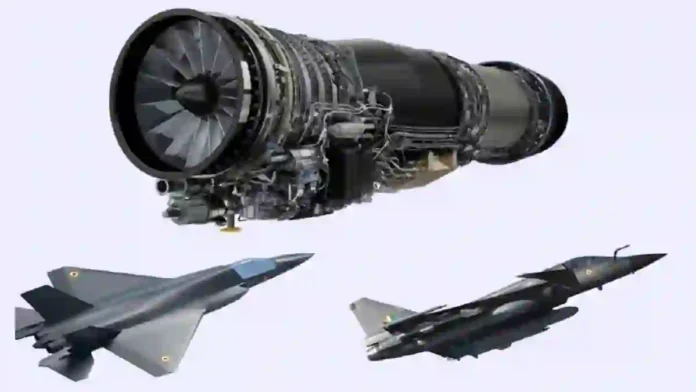The ongoing delays in engine deliveries for the TEJAS MK-1A program have raised significant concerns within the Indian defence establishment about the reliability and strategic risks of continued dependence on American engine suppliers, specifically GE Aerospace, for the next-generation TEJAS MK-2 fighter jets.
The TEJAS MK-2 is poised to replace the Indian Air Force’s Mirage-2000, Jaguar, and MiG-29 fleets, making uninterrupted and timely engine supply a matter of national security and operational readiness.
Current Situation And Challenges
The TEJAS MK-2 program is currently tied to the American GE F414 engine, with an 80% technology transfer agreement that would allow most of the engine to be manufactured in India.
However, the experience with the TEJAS MK-1A, where GE Aerospace missed multiple delivery deadlines for the F404-IN20 engines, has exposed the vulnerability of relying on a single foreign supplier, particularly given the complex interplay between US foreign policy and defence exports.
These delays have already affected the IAF’s squadron strength and could potentially disrupt the induction timeline for the MK-2, which is critical for maintaining air superiority.
Read- India Looks To Expedite Procurement of S-400 From Russia
Geopolitical Considerations
India’s strategic autonomy and independent foreign policy, especially in the wake of the Russia-Ukraine conflict and Operation Sindoor, have not always aligned with US expectations, raising questions about the long-term reliability of US-origin critical military supplies.
The possibility of US-India relations deteriorating, or of future American administrations leveraging engine supply for political concessions, cannot be ruled out.
Exploring Alternative Engine Options
Given these risks, there is a growing consensus among Indian defence analysts and policymakers that India must reconsider its engine options for the TEJAS MK-2.
The most prominent alternatives are:
| Options | Source | Thrust Class | Key Advanages | Risks/Challenges |
|---|---|---|---|---|
| GE F414 (USA) | GE Aerospace | 98 kN | Existing ToT agreement; local assembly planned; proven engine | US policy leverage; supply delays |
| Safran (France) | Safran | 110 kN (offered) | Higher thrust; Safran’s willingness for deep ToT; existing HAL collaboration; less political baggage | New development timeline; cost |
| Russian Engines | UEC-Saturn | Various | Existing HAL experience with Russian engines; less political interference | Technology gap; integration issues |
Safran (France): Safran has formally proposed to collaborate with HAL and India’s Gas Turbine Research Establishment (GTRE) to co-develop a 110 kN thrust engine for the TEJAS MK-2, which would offer improved performance over the GE F414.
Safran’s approach includes significant local manufacturing, technology transfer, and aligns with India’s push for defence self-reliance. Safran already has a joint venture with HAL for helicopter engines and is expanding its sourcing and MRO footprint in India.
Russian Engines: HAL has a history of manufacturing Russian engines under license, and Russia is generally less restrictive about end-use or operational autonomy. However, Russian engine technology may not match Western offerings in terms of thrust-to-weight ratio, fuel efficiency, or emissions, and integrating a new engine at this stage could delay the program.
Read- Indian Army Charts Ambitious Roadmap For Modernisation
American Engines: India should seriously consider exploring French or Russian engines for the TEJAS MK-2 as a means to reduce geopolitical risks and enhance the reliability of its fighter jet programs. The recent delays in the supply of American GE engines for the TEJAS MK-1A have exposed India’s vulnerability to external pressures and supply chain disruptions, which can undermine operational readiness and national security. These delays are not just logistical setbacks but have strategic implications, especially as India faces evolving regional threats and the prospect of a two-front conflict.
Strategic Recommendations
Diversification: India should actively pursue a parallel engine development program with Safran to reduce dependence on a single supplier and mitigate geopolitical risks.
Technology Transfer: Any new engine deal must prioritise deep technology transfer and local manufacturing to build indigenous capability for future platforms, including the fifth-generation AMCA.
Timelines: While switching engines at this stage could introduce short-term delays, the long-term benefits of supply security, operational autonomy, and indigenous capability outweigh the risks, especially given the strategic importance of the TEJAS MK-2 program.
Policy Alignment: India must ensure that future engine deals are insulated from external political pressures, favouring partners with a track record of non-interference in operational matters, such as France or Russia.
In conclusion, the TEJAS MK-2 program’s success hinges on secure, timely, and autonomous access to advanced jet engines. Recent experiences with GE Aerospace have underscored the risks of over-reliance on US suppliers.
France’s Safran emerges as a strong alternative, offering not only a higher-thrust engine but also a partnership model more aligned with India’s strategic and industrial goals. India should move decisively to diversify its engine options, leveraging this opportunity to build a robust indigenous aero-engine ecosystem for the future.
IDN
Agencies




